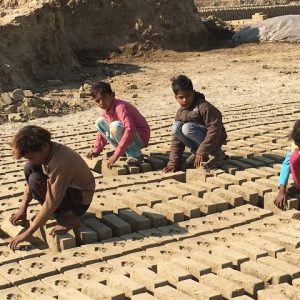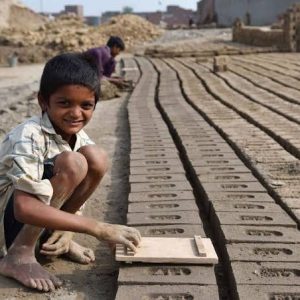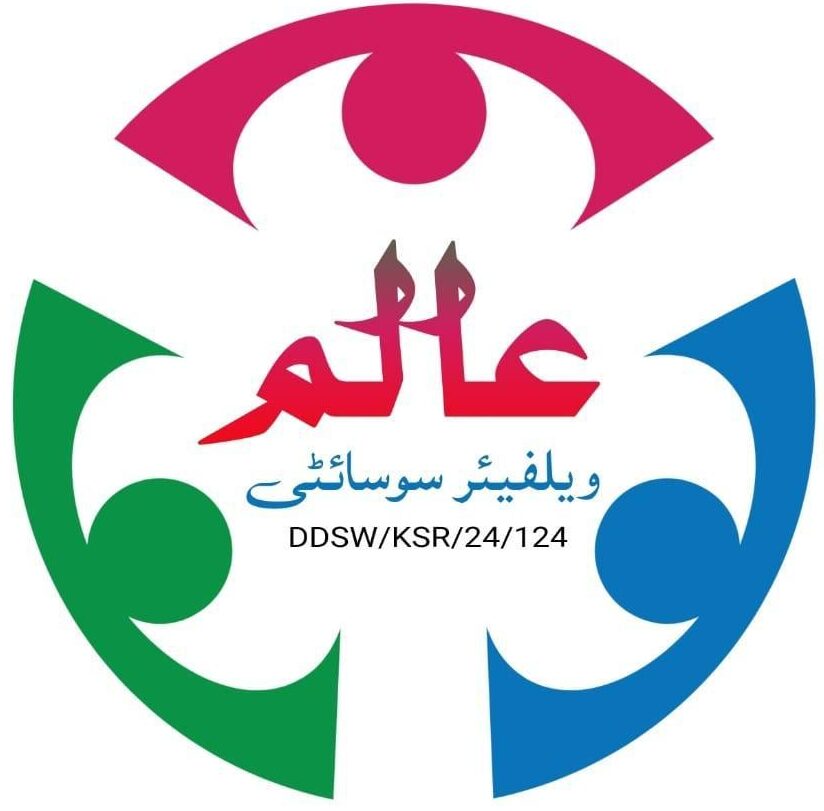Because Only Together We Can
Empowering a compassionate and equitable society, where every individual has access to quality healthcare, education, and economic opportunities, regardless of gender, religion, orsocialstatus."
ABout Aalum Welfare Society!
Registered under the Societies Registration Act of 1961 with the Social Welfare Department, Registration no. DDSW/KSR/24/124. we are a non profit organization dedicated to serving humanity and empowering marginalized communities. With a legacy of compassion and selflessness, we have been working tirelessly to address the multifaceted needs of our beneficiaries, providing them with access to quality healthcare, education, and social welfare initiatives. Aalum Welfare Society is a direct response to the pressing social issues plaguing Pakistan, including gender inequality, degrading health and education standards, and inadequate living conditions. Born out of years of grassroots experience, our organization recognizes itself as an agent of positive change.
Vision Statement
Empowering a compassionate and equitable society, where every individual has access to quality
healthcare, education, and economic opportunities, regardless of gender, religion, orsocialstatus.
Mission Statement






core competencies for Aalum Welfare Society
- Community Engagement: Building strong relationships with marginalized communities.
- Healthcare Service Delivery: Providing quality healthcare services through free dispensaries and
medical camps. - Education and Training: Offering vocational training, literacy programs, and educational resources.
- Advocacy and Policy Influence: Advocating for policy changes supporting social justice and human
rights. - Disaster Response and Relief: Providing timely and effective disaster response and relief services.
- Social Awareness and Sensitization: Conducting awareness campaigns on social issues, transgender
rights, and disability inclusion. - Capacity Building: Enhancing skills and knowledge ofstaff, volunteers, and community members.
- Partnership and Collaboration: Building strategic partnerships with organizations, government
agencies, and stakeholders. - Resource Mobilization: Securing funding, donations, and resourcesto support programs and services.
- Monitoring and Evaluation: Ensuring accountability,transparency, and effectivenessthrough robust
monitoring and evaluation systems.
- Functional Competencies:
1. Program Management: Designing, implementing, and evaluating programs.
2. Financial Management: Managing finances, budgets, and resources.
3. Human Resource Management: Recruiting, training, and developing staff and volunteers.
4. Communication and Marketing: Promoting Aalum Welfare Society’s mission, values, and impact. - Technical Competencies:
1. Healthcare Services: Medical care, health education, and hygiene promotion.
2. Education and Training: Curriculum development, teaching, and vocational training.
3. Social Work: Counseling, case management, and community outreach.
4. Disaster Management: Emergency response, relief, and rehabilitation. - Soft Skills Competencies:
1. Empathy and Compassion: Understanding and responding to community needs.
2. Cultural Sensitivity: Respecting diversity and promoting inclusivity.
3. Teamwork and Collaboration: Building effective teams and partnerships.
4. Adaptability and Flexibility: Responding to changing community needs and contexts
A Legacy of Compassionate Service
Over the years, we have been privileged to work on a wide range of programs and initiatives, dedicated
to serving humanity and empowering marginalized communities. Some of our notable programs include:
- Child Protection Program:
1. Right to Safety: Every child has the right to be safe from harm, abuse, and exploitation.
2. Prevention: Preventing child abuse and neglect through education, awareness, and community
engagement.
3. Identification: Identifying children at risk or already experiencing abuse or neglect.
4. Intervention: Providing support and services to children and familiesto address abuse or neglect.
5. Support: Offering counseling, therapy, and othersupport servicesto help children recover from abuse
or neglect.
6. Advocacy: Advocating for policies, laws, and practicesthat protect children’srights and prevent abuse.
7. Community Engagement: Engaging communities in child protection effortsthrough awareness
campaigns and training.
8. Collaboration: Collaborating with government agencies, organizations, and stakeholdersto ensure a
coordinated response to child protection issues.
9. Capacity Building: Building capacity of individuals, organizations, and communities to prevent and
respond to child abuse and neglect.
10. Monitoring and Evaluation: Continuously monitoring and evaluating child protection effortsto ensure
effectiveness and improvement.
Child Protection Areas: Child Labor, Child Trafficking, Child Marriage, Child Abuse (Physical, Emotional,
Sexual), Neglect, Exploitation (Commercial or Sexual), Bullying, Online Safety
Child Protection Principles: Best Interests of the Child, Non-Discrimination, Participation, Protection,
Provision, Partnership

- DEHI REFORMS PROGRAM:
To transform Dehi into a model of excellence in governance, social welfare, and economic
development.
1- Improve governance and accountability
2- Enhance social welfare services
3- Foster economic growth and development
4- Promote education and skill development
5- Ensure environmental sustainability
6- Implement e-governance solutions
7- Strengthen transparency and accountability
8- Establish citizen engagement platforms
9- Healthcare services expansion
10- Education and skill development programs
11- Women and child empowerment initiatives
12- Social protection schemes

Free Jahez Program
Purpose: To support and empower underprivileged girls by providing them with a comprehensive wedding package, enabling them to start their new life with dignity and confidence.- Provide a complete wedding package (Jahez) to poor girls.
- Support and empower underprivileged girls to lead a dignified life.
- Promote social justice and equality.
- Reduce financial burdens on poor families.
Wedding Package (Jahez):
- Clothing and accessories
- Furniture and appliances
- Kitchen utensils and essentials
- Bedding and linens
Eligibility Criteria:
- Age: 18-30 years
- Family income: Below poverty line
- Education: Minimum primary education
- Residency: Local resident
Application Process:
- Submission of application form
- Document verification (income, age, education, etc.)
- Interview with program staff
- Selection and approval
Partnerships:
- Local NGOs and community organizations
- Government agencies (social welfare department)
- Corporate sponsors and donors

Free Plantation Projects
Purpose: To promote environmental sustainability and community development by providing free tree plantations to marginalized communities.Objectives:
- Distribute free tree saplings to marginalized communities.
- Promote environmental awareness and education.
- Support community development and engagement.
- Contribute to climate change mitigation.
Target Groups:
- Schools and educational institutions
- Community groups and organizations
Partnerships:
- Local nurseries and tree suppliers
- Environmental organizations and NGOs
- Government agencies (forestry, environment, social welfare)
Budget Allocation:
- Tree saplings and distribution: 50%
- Environmental education and materials: 20%
- Community engagement and events: 15%
- Monitoring and evaluation: 10%
- Project administration and overheads: 5%

Admissions of Labour Children in School
Purpose: Empower underprivileged children through education, providing them with opportunities for a brighter future.
Objectives:
- Identify and enroll labor children in schools.
- Provide support for admission processes.
- Ensure retention and academic success.
Partnerships:
- Labour unions and organizations
- NGOs focused on education and child welfare
- Government schools and education departments
- Local businesses and corporate sponsors
Budget Allocation:
- Outreach and identification: 20%
- Admission support: 30%
- Retention and academic support: 30%
- Partnerships and collaborations: 10%
- Monitoring and evaluation: 10%
Indicators:
- Number of children enrolled
- Retention rate
- Academic performance
- Parent satisfaction
Challenges:
- Locating and identifying labor children
- Overcoming language barriers
- Ensuring retention and academic success
Solutions:
- Community engagement and outreach
- Language support services
- Regular monitoring and mentoring
Promoting Education
Purpose: Empower individuals, communities, and societies through quality education.
Objectives:
- Increase access to education for underprivileged groups.
- Improve educational quality and relevance.
- Enhance learning outcomes and skills development.
Strategies:
- Scholarships and financial aid for needy students
- Infrastructure development (schools, libraries, technology)
- Teacher training and capacity building
- Curriculum reform and modernization
- Community engagement and outreach programs
- Partnerships with NGOs, governments, and the private sector
- Digital education initiatives (online resources, e-learning)
Programs:
- Literacy programs for adults and children
- Vocational training and skills development
- STEM education initiatives (science, technology, engineering, math)
- Arts and cultural education programs
- Special education programs for differently-abled individuals

Special Education
Purpose: Advocating for inclusive education, ensuring every child has access to quality learning.
Objectives:
- Identify and assess children with special needs.
- Develop personalized education plans (IEPs).
- Provide specialized instruction and support.
- Foster inclusive learning environments.
- Promote independence, self-advocacy, and social integration.
Strategies:
- Collaborate with healthcare professionals, parents, and educators.
- Conduct comprehensive assessments (cognitive, behavioral, developmental).
- Develop tailored plans addressing unique needs and goals.
- Regularly review and update IEPs.
Support Structures:
- Trained special education teachers and staff
- Adaptive curricula and teaching methods
- Assistive technology and resources
- Modified physical spaces for accessibility
- Programs for socialization and peer support
- Preparation for post-secondary education, employment, or independent living
Partnerships:
- Healthcare providers and professionals
- Parents and family organizations
- General education schools and districts
- Community resources and support services

Plantations on Pakistan Day
Purpose: Celebrating our national day by promoting environmental sustainability and community service.
Agenda:
- Welcome address by the host/organizer
- National anthem and flag-hoisting ceremony
- Keynote speech by Sardar Ali Nakai Sb on environmental importance and national responsibility
- Tree plantation ceremony (symbolic planting of a tree sapling)
- Distribution of tree saplings to participants
- Group photo session
- Closing remarks and vote of thanks
Participants:
- Sardar Ali Nakai Sb (chief guest)
- Local government officials
- Environmentalists and conservationists
- Representatives from educational institutions
- Community leaders and members
- Media representatives
Activities:
- Tree plantation drive (mass planting of tree saplings)
- Environmental awareness stalls and exhibitions
- Quiz and painting competitions (for students)
- Musical performances (patriotic songs)
Vocational Training for Women
Objective: Empowering women with skills and knowledge to promote economic growth and self-reliance.
Goals:
- Enhance women’s economic independence and self-sufficiency through market-driven vocational training.
- Equip women with in-demand skills for employment or entrepreneurship.
- Increase women’s participation in the workforce.
- Improve women’s economic stability and decision-making power.
Vocational Training Courses:
- Computer skills and IT
- Beauty and wellness (cosmetology, esthetics)
- Culinary arts and hospitality
- Fashion design and tailoring
- Healthcare assistance
- Entrepreneurship and small business management
Partnerships:
- Local businesses and industry partners
- Women’s organizations and community groups
- Government agencies (labor, education, women’s empowerment)
Implementation Plan:
- Conduct needs assessment and develop training curriculum
- Recruit trainers and mentors
- Recruit and select participants
- Provide training sessions and mentorship
- Support internships, job placements, and entrepreneurship
Transgender Rights
Objective: Advocate for the rights and dignity of transgender individuals, promoting inclusivity and acceptance.
Challenges:
- Discrimination and stigma
- Lack of legal recognition and protection
- Limited access to healthcare and social services
- Violence and harassment
- Employment and education barriers
Rights:
- Right to self-identification
- Right to legal recognition and documentation
- Right to healthcare (hormone therapy, surgery, mental health support)
- Right to education and employment
- Right to freedom from discrimination and violence
Laws and Policies:
- Anti-discrimination laws
- Gender recognition laws
- Hate crime laws
- Healthcare access laws
- Education and employment policies
Support Programs:
- Education and training programs
- Support groups and hotlines
- Advocacy campaigns
- Community events and rallies
- Allyship and solidarity initiatives
International Women’s Day Campaign
Objective: Participate in global efforts to promote women’s rights, equality, and empowerment.
Ways to Promote Women’s Recognition:
- Honor women’s contributions to history, science, arts, and society.
- Raise awareness about gender inequality, discrimination, and bias.
- Advocate for women’s rights, empowerment, and equal opportunities.
- Celebrate diversity, inclusivity, and individuality.
- Support and uplift women’s voices, choices, and autonomy.
- Raise awareness about women’s rights and gender equality.
- Celebrate women’s achievements and successes.
- Encourage both men and women to support gender equality.
- Inspire action and advocacy for women’s empowerment.
Campaign Strategy:
Pre-Launch (Feb 20 – Mar 7)
- Social media teasers and countdown.
- Partner with influencers and organizations.
- Prepare campaign materials (graphics, videos, posts).
Launch (Mar 8 – International Women’s Day)
- Social media blast: share campaign message, visuals, and hashtags.
- Host events, webinars, or workshops.
- Share inspiring stories of women’s achievements.
Prisoners’ Rights
Objective: Support prisoners lacking resources to pursue their cases, advocating for justice and equality.
Humane Conditions:
- Adequate food, water, shelter, and healthcare.
- Freedom from torture and cruel treatment.
- Access to legal representation and counsel.
- Right to fair trial and due process.
- Freedom of speech and expression.
Rehabilitation and Reintegration:
- Education and job training programs.
- Mental health and substance abuse treatment.
- Family visitation and communication.
- Preparation for re-entry into society.
- Voting rights (varies by country/state).
Challenges and Controversies:
- Overcrowding and poor living conditions.
- Racial disparities and discrimination.
- Solitary confinement and isolation.
- Access to healthcare and medical care.
- Death penalty and life sentences.
Election Awareness Campaigns
Objective: Promoting civic engagement, awareness, and responsible citizenship.
Strategies:
- Public Service Announcements (PSAs) on TV, radio, and print media.
- Debate broadcasts and analysis.
- Voter guides and educational inserts in newspapers.
- Social media campaigns (Twitter, Facebook, Instagram, etc.).
- Online voter registration platforms.
- Election-related websites and portals.
- Influencer partnerships and online advocacy.
- Online advertising (Google Ads, Facebook Ads, etc.).
- Voter registration drives.
- Town hall meetings and candidate forums.
- Door-to-door canvassing.
Partnerships and Collaborations:
- Partner with schools, libraries, and community centers.
- Partner with local organizations, NGOs, and civic groups.
- Engage with election officials and government agencies.
- Collaborate with media outlets for coverage.
- Involve influencers, celebrities, and thought leaders.
Engagement and Feedback:
- Conduct surveys and feedback sessions.
- Adjust strategies based on data analysis.







